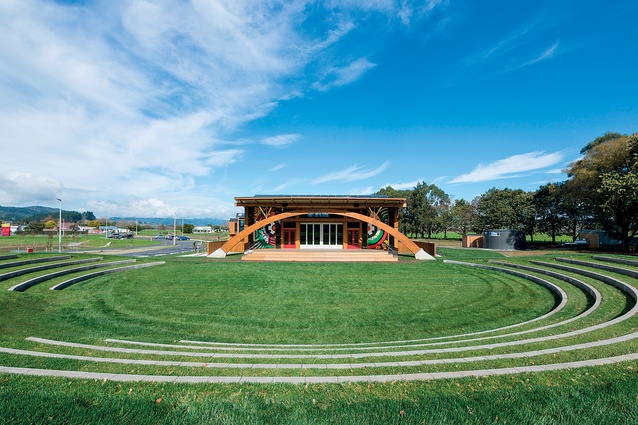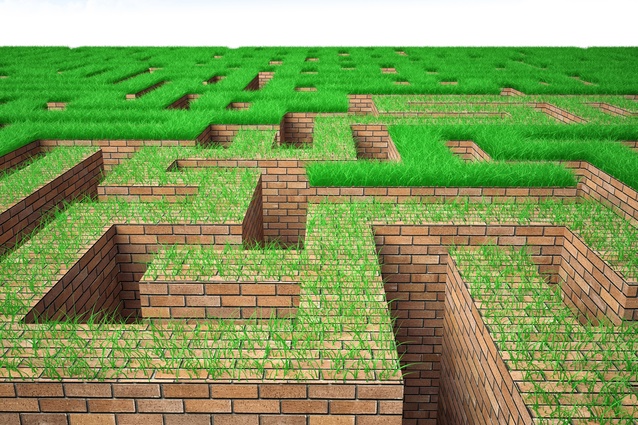Navigating the green labyrinth
Green is the new black. It’s that simple. This sustainable leaning applies to building products, as well just about every other consumer-driven product on the market. Corporations are bending over backwards to tout their products as environmentally friendly, as green, or as sustainable. But that doesn’t necessarily mean those products are what they claim to be.
That’s where environmental certifications, ratings and labelling come in. Enter Green Tag, Environmental Choice New Zealand, Good Environmental Choice Australia, Forest Stewardship Council certification, and the list goes on. Add to the mix the latest players in the construction products labelling field: Declare and EPD. EPD is an acronym for The Australasian Environmental Product Declaration Programme, while Declare is an initiative of the International Living Future Institute’s Living Building Challenge or LBC.
It’s a mouthful, and with the introduction of two more environmental labels to the construction sector, you’d be forgiven for voicing the urge to shut your eyes, point a finger, pick any certified or appropriately labelled product, and get on with the job.
But, it’s not quite a greenwash in the building products market yet. In New Zealand, the New Zealand Green Building Council clearly articulates its ‘recognised eco-labels’. Along with Environmental Choice NZ (ECNZ) certified products, these include products and materials that have an eco-label awarded by a certification body that has successfully passed the Green Building Council of Australia’s Assessment Framework for Product Certification Schemes. On this side of the Tasman these include, but aren’t limited to, Green Tag, Greenguard and Green Tick. And now there is the EPD and Declare, neither of which are recognised by the NZGBC yet. They’re still new to the market, but they’re gaining traction, and fast.
In the context of green building, choosing products isn’t the only factor to worry about, it’s whether the structure you’re designing or building needs to make the grade for a certain rating, either residential or commercial. And it’s the same story here. There are more than a couple of these ratings around, so it’ll depend on the specific requirements of an individual project whether or not any one of these ratings are attained. There’s Homestar, Green Star, Passive House, Living Building, BASE…
With this plethora of rating tools and certifications in mind, the last two cabs off the rank provide an interesting perspective on the construction eco-slant for New Zealanders.
Essentially, an EPD allows customers to access much more detailed information about the environmental impact of a building product than what was previously available. A published EPD offers a complex and detailed view of a particular product, which is verified by a third-party. Australasian EPD programme manager Jake McLaren said the programme utilised a life cycle assessment (LCA) to ascertain the environmental impacts associated with every stage of a product’s life, from the cradle to the grave.
“One of the key benefits of an LCA is that it accounts for the whole life of the product, therefore it avoids inadvertently increasing environmental burdens in one life cycle stage when making environmental improvements in another part of the life cycle. LCA models include a range of environmental indicators such as global warming potential, ozone-creating potential and eutrophication potential.”
McLaren said the EPD programme differed from other environmental ratings or certifications because of its whole-of-life approach. “Having a certified EPD does not imply any environmental advantage of the product itself, only that the presented information has been verified … Environmental Choice and other eco labels are typically Type I environmental labelling schemes … the design is normally such that only a certain share of the market will fulfill the requirements, and thus they are intended to drive the market into a direction with a lower environmental impact. These two tools [EPD and Environmental Choice] thus serve similar purposes but provide complimentary information.”
At the moment, EPDs are not recognised by the New Zealand Green Building Council, however this is likely to change in the near future.
Allied Concrete was the first New Zealand company to publish an EPD following the programme’s launch in September 2014. National technical manager Chris Munn said the move was part of Allied Concrete’s ongoing commitment to improve the company’s long-term sustainability. “The EPD is a rigorous, third-party verified certification process that is carried out to an internationally recognised standard,” Munn said.
And while Munn steadfastly advocates the use of EPDs, he believes there needs to be generous credit scheme in place to recognise the time and effort required to achieve an EPD. “At the moment, this is not the case and I do not understand why it is taking so long for the New Zealand Green Building Council to adopt this concept. From my point of view, it ought to be adopted immediately as a recognised environmental initiative.”
NZGBC communications director Miranda James said the council was in the process of reviewing and updating the way its GreenStar rating tool recognised EPDs. “As the EPD framework becomes more widely used and more products adopt it, we aim to ensure our rating tools are updated to accommodate this,” she said. “The more authoritative information that is available about the impact of products and materials, the better. The value of the EPD framework at the moment is that it is transparent, so you can see very clearly what the credentials of a product are. It will be even more valuable when there are more products using EPDs and it becomes possible to compare them.”
The other new eco-label for the construction sector, Declare, was borne of the Living Building Challenge. The LBC is not administered by the NZGBC and is the most stringent sustainability certification programme for the built environment available globally. In New Zealand, the first building to achieve LBC certification was Te Uru Taumatua, the new headquarters for Tuhoe in Taneatua, which was officially opened in early 2014.
The LBC mandates that materials used in a building aiming to achieve its certification are free of its ‘Red List’ chemicals; those that contain dangerous or hazardous components. The wider requirements are complex, but include restrictions around where materials are sourced from in relation to the geographical location of the site.
Jasmax associate, architect Michelle Johansson, worked methodically for two years researching hundreds of products for Te Uru Taumatua. “All materials used within the project could not contain any toxic components listed in the LBC’s Red List… from the glazing in windows down to the glue used to secure them,” Johansson said.
“The LBC’s Declare programme was designed to capture this research to make it readily available to all other projects undertaken in the future. On undertaking research for the project, I found product after product that was RL free or RL Compliant, made in New Zealand, and had the potential to fit well under a Declare label.”
Declare labelling is a declaration from the manufacturer about the contents of its product. Its veracity is checked and given final approval by the International Future Living Institute (the organisation that operates the LBC). “Declare doesn’t compete with EPDs, LCAs, ECNZ and Green Tag – each programme inhabits its own niche – they have overlaps in what they assess and so have the potential to support each other,” Johansson said. “Declare allows manufacturers to display their product’s material composition much like food ingredients in a simplified and transparent manner whilst educating manufacturers and consumers about the toxicity of products.”
At the time of going to print in November 2014, eight Declare labels had been certified in the second half of 2014 alone. “I would love to see all the products we use every day, which I know from my LBC research to be compliant, Declare themselves so it is entirely possible to build a non-toxic building, and it is considered normal to do so,” Johansson said.
So, while Declare labels provide clear information about a product’s ingredients and their environmental status, EPDs offer a broader analysis and reporting focus. EPDs list a product’s ingredients but make no value judgement about whether those ingredients are environmentally friendly.
While the ratings and schemes are diverse and operate across a broad range of products, their overarching goal is the same – to create a more sustainable built environment.
As Johansson said: “All green building tools are working to improve and make the environment we inhabit healthier. Even in doing things differently, they are all heading in the same direction. All roads lead to Rome.”












